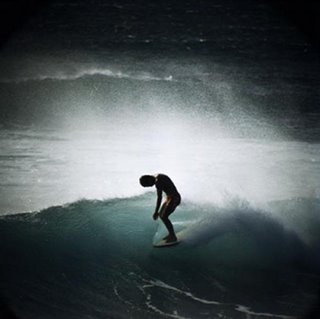modern warfare
-
little men with White Nationalist tattoos
talk new pull up standards for the military
while the reality is
gender neutral drones will be fighting gender neut...
3 hours ago

N WIND 15 TO 20 KT.
RISING TO 20 TO 25 KT IN THE AFTERNOON.
WIND WAVES 4 FT.
W SWELL 5 FT AT 10 SECONDS.
TONIGHT N WIND 20 TO 25 KT...BECOMING NW 15 TO 20 KT AFTER MIDNIGHT.
WIND WAVES 5 FT.
W SWELL 4 FT AT 8 SECONDS.
One of the truly great surfers of the postwar era, Midget Farrelly has become part of a polarized debate in his Australian homeland. To many, he is one half of a classic very personal feud with the nation's other world champ of the '60s, Robert "Nat" Young. While it's true the pair have hugely different personal styles --Midget's restrained and intelligent, Nat's loud and large -- the debate has been largely unfair to Farrelly, whose contribution to his sport goes far beyond the feud.
Born in Sydney, Farrelly had his first surf experiences at North Bondi beach in the early '50s. This was the heart of old-style Australian beach culture; the realm of the volunteer lifesaver "surf clubs," where the country's few surfers would leave their big wooden boards overnight because they were too heavy to carry home on cars or bikes. It rubbed off on Midget, and later in life, he would return to the surf clubs, looking for some of the "innocence" (his description) that he'd felt had vanished from the surfing scene.
Quickly nicknamed "Midget" for his slight build among the big men of the beaches, a barely teenage Farrelly saw California's Greg Noll surfing Sydney waves during Da Bull's lifeguard-sponsored visit in 1956 and realized: you could "corner." By 1961, the Malibu-style lightweight boards were being churned out and Midget was the Australian surfing champion. In 1962, he went to Hawaii and won the Makaha International championship in 6-foot surf, using a quick, light-footed surfing style.
In 1964, the International Surfing Federation had pulled together the world's surfing nations enough to stage a first-ever World Surfing Championships. The venue was Manly Beach on Sydney's north side, which must have seemed a strange location to some. At the time, Australia was hardly the epicenter of surfing. But Australian gasoline company Ampol had put up the bucks, and the Aussies were ready to step up. Sixty thousand people lined the Manly shores to watch Midget take the men's crown ahead of surfers such as Joey Cabell and Mike Doyle, and the sport got a public boost it arguably still feels today.
Through the '60s, Midget was arguably the most successful competitor in the world. Aside from the 1964 world title, he placed second at the 1970 world contest at Johanna behind Rolf Aurness. He learned to shape surfboards and produced two books --A Surfing Life and How to Surf -- in collaboration with the fine Australian journalist Craig McGregor.
Yet this was the decade that also saw him replaced (in some eyes) by Nat Young as the preeminent avatar of Australian surfing. Nat's image as both animal and proto-hippie superstar fit the roiling times, as surfing jumped and crashed around under the cultural pressures of the '60s. Midget was played out in the surf press as a conservative "yesterday's man" in a time of change. Midget quietly seethed at what he believed was the takeover of his beloved sport by a corrupt, drug-whacked generation of confidence men. He set his own path through the '70s and much of the '80s, building a successful blank-making and chemicals business (Surfblanks), getting into alternative sports (he once broke his ankle hang gliding and is a highly skilled sailboarder), keeping a low personal profile, yet always being in the water on the bigger days at North Avalon and other breaks near his Palm Beach home.
Today, he still runs Surfblanks and spends more time in the water than ever, developing older surfing skills like learning to ride a Blake-style 16-foot hollow board and to "sweep" (steer) a classic Australian surfboat. Married with two grown daughters, his public profile remained very low until, inspired by some of the new generation of Australian pro surfers whom he'd come to admire, he began appearing at events and surfing in the Legends displays that accompanied some Aussie pro events in the late '80s. Recently at the 1999 Noosa Surfing Festival, he re-won his 1964 crown in a replay of that event's final heat. -- Nick Carroll, October 2000

0 comments:
Post a Comment